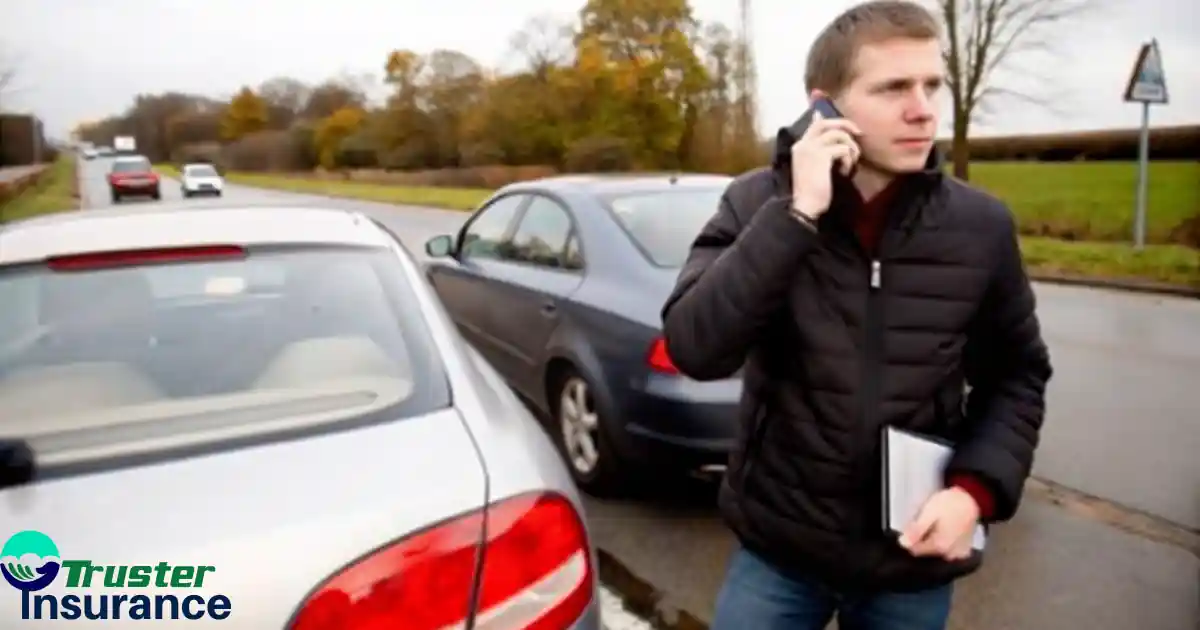You’ve just been handed the keys to your neighbor’s sporty convertible for the afternoon, and excitement pulses through you until a thought stops you cold: if something goes wrong, whose insurance has your back? Does your policy cling to the car itself, or does it latch onto whoever’s behind the wheel?
For most everyday scenarios like letting a friend run errands your coverage travels with the vehicle under a rule called permissive use. In plain terms, that means your insurer steps in first to cover damage or medical costs, up to the limits you’ve chosen.
But life isn’t always so straightforward. When you rent a car, pick up fares as a rideshare driver, or carry a non-owner policy, the tables turn and protection may ride with the person rather than the machine. Overlooking those fine-print twists can leave you footing the bill for dents, repairs, or even injury claims.
In the pages ahead, we’ll:
Demystify permissive use and why your car typically leads the way Highlight the key moments when coverage shifts to the driver Expose lesser known gaps like business use exclusions and peer-to-peer car sharing Finish with a simple checklist and FAQ so you always know exactly who’s covered and when
Let’s clear the fog around your auto policy so you can hand over your keys with total confidence.
What Is “Permissive Use” (and What It Means for “Does Insurance Follow the Car or the Driver?”)
At the heart of the question “does insurance follow the car or the driver?” lies a simple concept: permissive use. Under most standard auto policies, when you give someone your blessing to drive your vehicle, you extend your coverage to that person just as if you were behind the wheel. In other words, your insurance follows the car, not the driver, up to the limits and terms set in your declarations page
Key Points of Permissive Use
- Who qualifies? Anyone you explicitly or implicitly authorize friends, neighbors, or even a colleague so long as they’re a licensed driver not excluded by name on your policy.
- Frequency limits: Many insurers cap “permissive” driving to an occasional basis (often defined as fewer than 12 trips per year). Regular drivers should be added formally to avoid coverage gaps
- Coverage scope: Liability (bodily injury and property damage), collision, and comprehensive protections typically extend to permissive users, subject to your chosen deductibles and policy limits.
Common Exclusions
Even with permissive use built in, certain situations will strip away that extra coverage:
- Unlicensed or excluded drivers. If someone isn’t legally permitted to drive or is specifically named as excluded on your policy, permissive use won’t apply.
- Business or commercial use. Using your car for paid deliveries, rideshare services, or other business activities often requires a special endorsement; otherwise, your insurer may deny a permissive-use claim.
- Household members with regular access. Spouses and relatives living under your roof usually fall under “household” definitions not permissive use and may carry different coverage rules (or must be listed explicitly).
By knowing exactly how permissive use works, you’ll instantly grasp why, in everyday lending scenarios, insurance stays with the car and exactly when that rule flips to follow the driver instead. Next up, we’ll explore the pivotal exceptions where your policy steps aside and a driver-centric plan takes the wheel.

When Insurance Follows the Car
When you hand over your keys to someone you trust, most standard auto policies treat that as permissive use your insurance sticks with the vehicle itself, not the person behind the wheel. In practice, this means your coverage travels with the car you insure, so if an approved driver causes a mishap, your policy responds first, up to the limits you’ve chosen.
Under that permissive‐use umbrella, liability insurance handles the costs of injuries and property damage you cause to others. Bodily injury liability covers medical bills, lost wages, and legal fees, while property damage liability pays for repairs to someone else’s vehicle or other damaged property.
Beyond liability, collision coverage steps in when your insured vehicle is damaged in a crash whether you hit another car, a guardrail, or roll over. After you satisfy your deductible, your insurer covers the remaining repair costs, up to your policy’s limits.
Likewise, comprehensive coverage protects against non-collision losses hail, theft, vandalism, or animal strikes. Once you pay the comprehensive deductible, your insurer makes good on repairs or replacement, regardless of who’s at fault
related topics You Might Like:
- does car insurance follow the driver or the vehicle
- does auto insurance follow the car or driver
- Does Insurance Follow the Car or the Driver in California?
When Insurance Follows the Driver
There are a few key situations where your personal auto policy hands off responsibility from the vehicle to the person behind the wheel. In these cases, protection “sticks” with the driver rather than the car itself.
1. Rental Cars
When you sign a rental agreement, you’ll usually be offered a Collision Damage Waiver (CDW) or Loss Damage Waiver (LDW) by the rental company. If you decline and rely on your own policy, most insurers will cover damage as if your personal vehicle were in play up to your limits but only if you carry both collision and comprehensive on your home policy. Otherwise, you’ll be responsible for repairs. Always check before you skip the rental’s coverage option: missing the right endorsement can leave you paying hundreds or even thousands out of pocket.
2. Rideshare and App-Based Driving
Driving for a rideshare service opens a coverage gap. Before you accept a ride request, your personal policy typically pauses certain protections. Once you switch your app on, the company’s liability policy kicks in but it may offer only basic liability, leaving physical damage to the vehicle uninsured until you accept a passenger. After you drop someone off and switch the app off, your personal coverage usually resumes. That on-off window is where risk lurks, so many drivers buy a rideshare endorsement to plug the hole.
3. Non-Owner and Named-Driver Policies
If you frequently borrow cars but don’t own one yourself, a non-owner policy acts like a personal seatbelt: it provides liability coverage when you drive someone else’s vehicle but offers no collision or comprehensive for damage to the borrowed car. Conversely, a named-driver endorsement added to a friend or family member’s policy guarantees you’re treated as an insured driver on their vehicle, even if you aren’t listed on their declarations page.
Example:
Sarah doesn’t own a car, but she rents one twice a month. She discovered that her non-owner policy covered her liability, but she still paid the rental company’s CDW to handle any physical damage combining the two kept her fully protected without forcing her to buy a collision policy she’d rarely use.
By understanding these driver-centric plans, you’ll know exactly when coverage follows you and when it truly stays with the vehicle. Next, we’ll dive into some surprising edge cases like business-use exclusions and peer-to-peer car sharing where even driver-focused coverage can hit unexpected bumps.
Special Edge Cases
Even with permissive use and driver-centric policies in place, certain situations can leave surprising gaps in your protection:
1. Business-Use Exclusion
Personal auto policies typically exclude “business use”—such as hauling tools, making deliveries, or carrying paying passengers. If you’re on the clock (even for a side gig), your insurer may deny both liability and physical damage claims unless you add a specific business-use endorsement or purchase a commercial auto policy.
2. Leased & Fleet Vehicles
Vehicles owned or leased by a company almost always fall outside a standard personal policy. When a car is registered to a business or used primarily for work, you need a commercial auto policy. Trying to cover a fleet vehicle with personal insurance will likely result in claim denials for liability, collision, and comprehensive losses.
3. Peer-to-Peer Car Sharing
Lending your car through peer-to-peer sharing programs can trigger exclusions. While a few insurers still extend coverage to sharing arrangements, many explicitly bar peer-to-peer rentals leaving you on the hook for theft, damage, or liability unless you buy the platform’s protection plan.
By spotting these edge cases business use, company vehicles, and car-sharing you’ll know exactly when extra endorsements or separate policies are essential to keep you fully covered.
State-by-State: Does Insurance Follow the Car or the Driver?
Insurance rules vary by jurisdiction, but in most states the “permissive use” doctrine means your policy follows the vehicle. Below is a snapshot of how five key states handle permissive drivers:
| State | Permissive Use Rule | Key Notes |
|---|---|---|
| California | Insurers must extend the same liability limits to permissive drivers under Insurance Code § 11580.1(b)(4); vehicle owners are liable under CVC § 17150 for permissive users. | Even if the driver isn’t listed on the policy, they’re covered so long as they have your permission. |
| New York | The NY Department of Financial Services clarifies that any driver with the owner’s permission is a “covered insured,” even if not named on the policy. | Coverage applies for both liability and physical damage under permissive use, unless specifically excluded in policy language. |
| Texas | Texas is a permissive-driver state: anyone who drives your car with permission is covered by your policy; insurer exclusions of permissive drivers are prohibited. | Even family or household members not listed by name are covered. Recent legislation (C.S.H.B. 1810) reinforces that insurers cannot carve out permissive users. |
| Florida | Occasional drivers are covered under your policy’s permissive-use provision; Florida’s no-fault PIP also applies to permissive users in a crash. | Beyond liability, Personal Injury Protection (PIP) benefits extend to permissive drivers, but state-mandated minimums still apply. |
| Illinois | ILCS § 143.13a mandates that permissive users receive the same limits for BI, PD, UM/UIM, and MedPay as named insureds. | Whether named or permissive, all drivers benefit equally under the policy’s declared limits. |
This table illustrates that in these major jurisdictions, insurance predominantly follows the car—extending your policy to any driver you authorize. Next, we’ll bring these rules to life with real-world case studies.
Real-World Case Studies: When Insurance Follows the Car (and When It Doesn’t)
Let’s ditch the theory for a moment. Because in real life, it’s not about what “should” happen it’s about what does happen when someone hands over their keys. These stories unpack what really goes down when insurance is forced to pick sides: car vs. driver.
Case 1: The Friendly Favor That Got Expensive
Alex didn’t think twice when his cousin Mia asked to borrow his car for the weekend. But when she got into a fender-bender on the way back from brunch, things got messy.
Turns out, since she had his blessing and wasn’t doing anything business-related, Alex’s insurance stepped in—first for the damage she caused to the other car, and then to cover repairs to his own. If the costs had gone above his policy limits, Mia’s personal coverage might’ve picked up the rest. But if Mia had been using it for DoorDash? Game over—claim denied.
Case 2: Rental Regret
Priya was on vacation, renting a car and feeling invincible. She skipped the rental company’s coverage figured her regular policy had her back. It mostly did… until she backed into a concrete pole.
Her insurer covered it, yes—but only because she carried both collision and comprehensive coverage at home. No collision? No payout. And that deductible she forgot about? That came out of pocket, fast.
Case 3: Rideshare Reality Check
Devin drives for a rideshare app. One night, he’s waiting for a ping with the app on when he gets sideswiped at a light. Simple enough? Not really.
Because there was no passenger onboard, the rideshare company’s coverage only gave him the bare minimum liability. No help for the damage to his own car—unless he’d added a rideshare endorsement, which he hadn’t.
Case 4: Lisa’s Lean Coverage
Lisa doesn’t own a car but borrows her roommate’s hatchback now and then. One night she clips a parked car, and suddenly she’s wondering: am I covered?
Luckily, the roommate’s insurance picked up the tab at least until the claim crossed their liability limit. Lisa had a non-owner policy, which stepped in to help cover the rest. But that policy didn’t do a thing for damage to the hatchback itself. That bill? Straight to the roommate.
FAQ – Can both the driver’s and owner’s insurance cover the same crash?
Short answer: Yes just not at the same time. The car owner’s insurance usually takes the lead (called primary), while the driver’s kicks in after if needed (as secondary). But don’t count on it without checking both policies carefully. Some states and insurers make things a whole lot messier.

Coverage-Check Checklist: How to Know If You’re Covered Before the Keys Change Hands
Before you hand your car over or take someone else’s for a spin run through this fast but crucial checklist. Because when the unexpected happens, the last thing you want is to realize your coverage doesn’t stretch as far as your trust did.
✅ Are You the Named Insured on the Policy?
- Check the declarations page of your auto policy.
- If your name isn’t there and you live in the same household, you might not be covered unless added.
- If you’re borrowing the car, you aren’t automatically covered permission matters, but so does your status.
✅ Do You Have Collision and Comprehensive?
- Liability won’t pay to fix your own car—only for the damage you cause to others.
- Without collision or comprehensive, a borrowed or rented vehicle won’t be protected against crashes, theft, vandalism, or animal hits.
✅ Are You Giving Permission Occasionally or Often?
- “Permissive use” usually means now and then not every Tuesday or every weekend.
- Frequent use without listing the driver can trigger a denied claim. If someone drives your car regularly, add them to your policy.
✅ Is the Car Being Used for Business?
- Personal policies generally exclude commercial use rideshare, delivery, client visits.
- You may need a business-use endorsement or commercial policy. Don’t assume your insurer will sort it out after the fact.
✅ Is There a Rideshare or Non-Owner Endorsement in Play?
- Rideshare drivers need a special add-on to cover the gap between personal and app-provided coverage.
- Borrowers without their own vehicle should consider a non-owner policy—liability protection follows them no matter whose car they drive.
✅ What State Are You In?
- Permissive use laws vary. Some states require equal coverage for borrowers; others allow insurers to limit what’s extended.
- Know your local rules or you might learn them the hard way, after a denied claim.
What’s the one thing most people forget to check?
Answer: The purpose of the trip. Insurance isn’t just about who’s driving it’s about why. A simple grocery run? Probably fine. Delivering furniture for money or running business errands? You’re in exclusion territory. Always align the use with your policy type.
Frequently Asked Questions: “Does Insurance Follow the Car or the Driver?”
Does my insurance cover someone else driving my car?
Yes, if you gave them permission. This is called “permissive use,” and most standard policies extend coverage to friends or family who borrow your car occasionally. But if they’re a regular driver or listed as “excluded,” your policy may not apply.
Am I covered when I drive someone else’s car?
Sometimes. If the owner’s insurance covers permissive drivers, you’ll usually be protected under their policy first. Your own insurance might kick in second if you have a policy and if the situation isn’t excluded (like using the car for work).
What happens if the person I lent my car to gets into an accident?
Your insurance pays first. That includes liability, collision (if you have it), and possibly comprehensive. If damages go over your limits or there’s a gap, the driver’s insurance might provide secondary coverage but that depends on their policy and your state’s rules.
Is rental car damage covered by my personal policy?
Usually if you already carry collision and comprehensive coverage on your regular car. But it won’t cover “loss of use” fees or admin costs some rental companies charge. Always ask before declining their extra coverage.
Can I use my car for side gigs like DoorDash or Uber?
Not without special coverage. Most personal auto policies exclude commercial or delivery use. If you get into an accident while “on the clock,” your claim could be denied. Look for a rideshare or business-use endorsement.
I don’t own a car. Should I still have insurance?
Quick Tip: Always assume nothing is covered until you’ve checked your declarations page and spoken with your agent. Policies differ. States vary. And fine print is where the surprises live.
Conclusion: So, Does Insurance Follow the Car or the Driver?
Here’s the bottom line: in most everyday situations think errands, occasional borrowing, or road trips with permission your insurance follows the car. That’s how policies are built: they protect the vehicle you’ve insured, no matter who’s driving it, so long as that person isn’t excluded and has your OK.
But once money enters the picture rideshare gigs, delivery runs, rental agreements, or business use the rules can flip fast. In those cases, the protection often shifts toward the driver, and your “I thought I was covered” moment could turn into a costly lesson.
This isn’t just fine print it’s financial reality. Knowing how and when your policy responds can be the difference between a claim being handled and a bill being yours. Whether you’re lending a car, borrowing one, or hopping into a rental, it pays to slow down and ask the right questions.
Next step? Pull out your declarations page. Know your limits. And if you’re still not sure, call your agent. It’s a 10-minute conversation that can save you thousands and more importantly, peace of mind.

